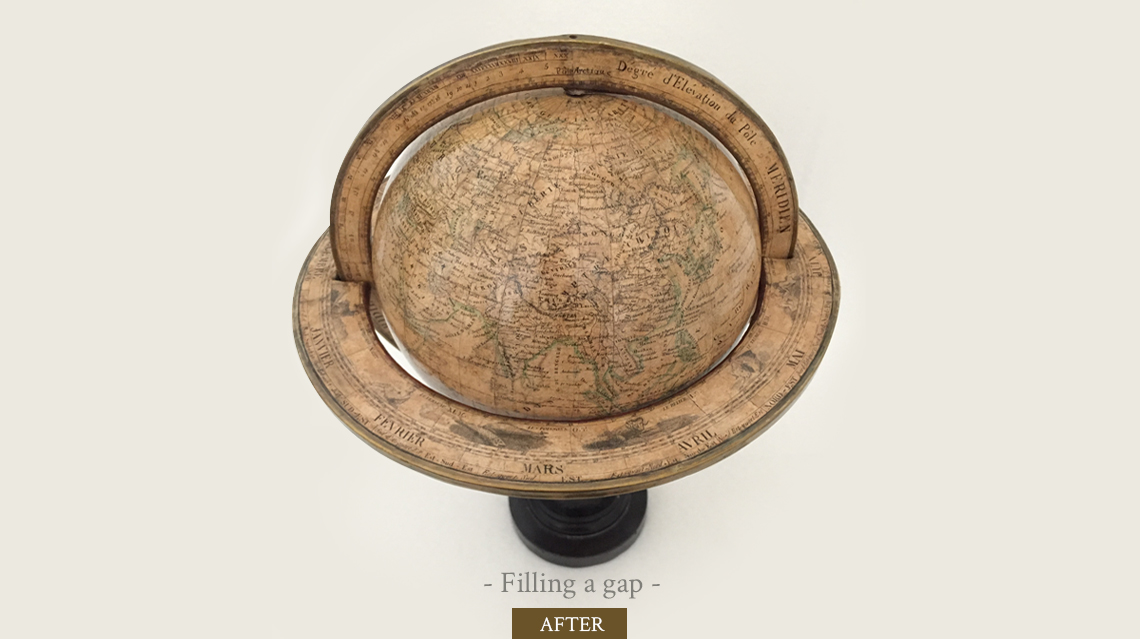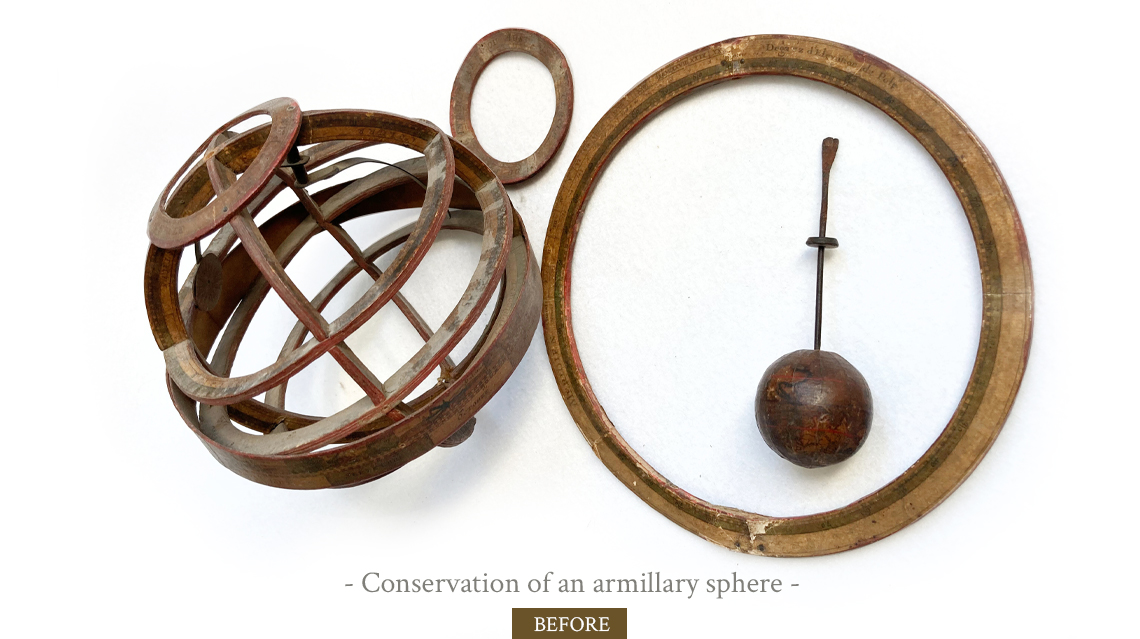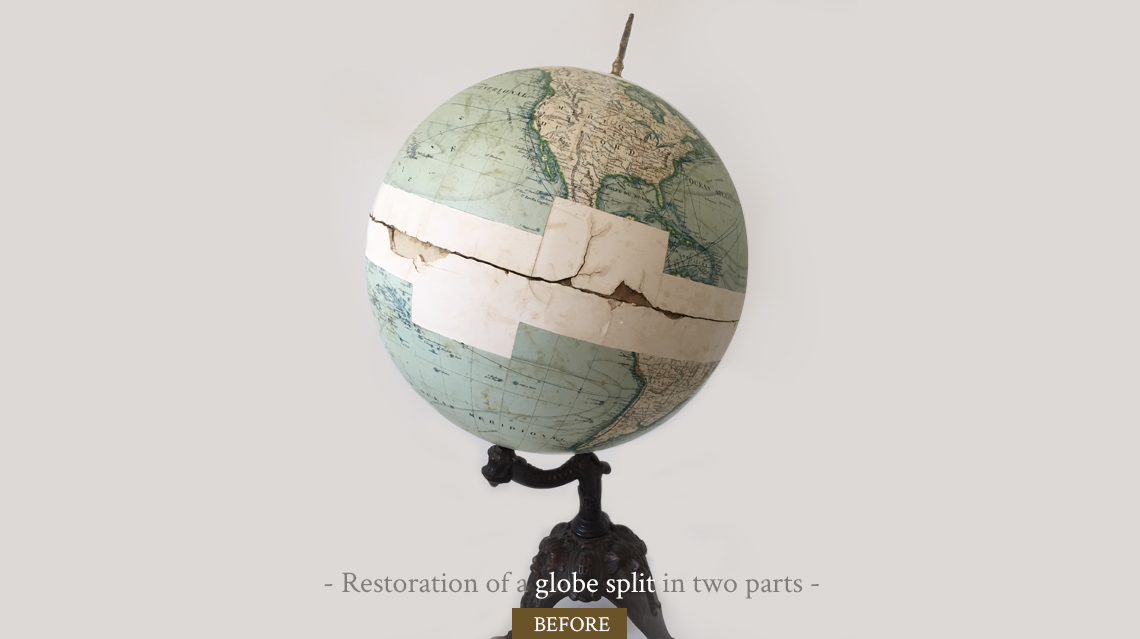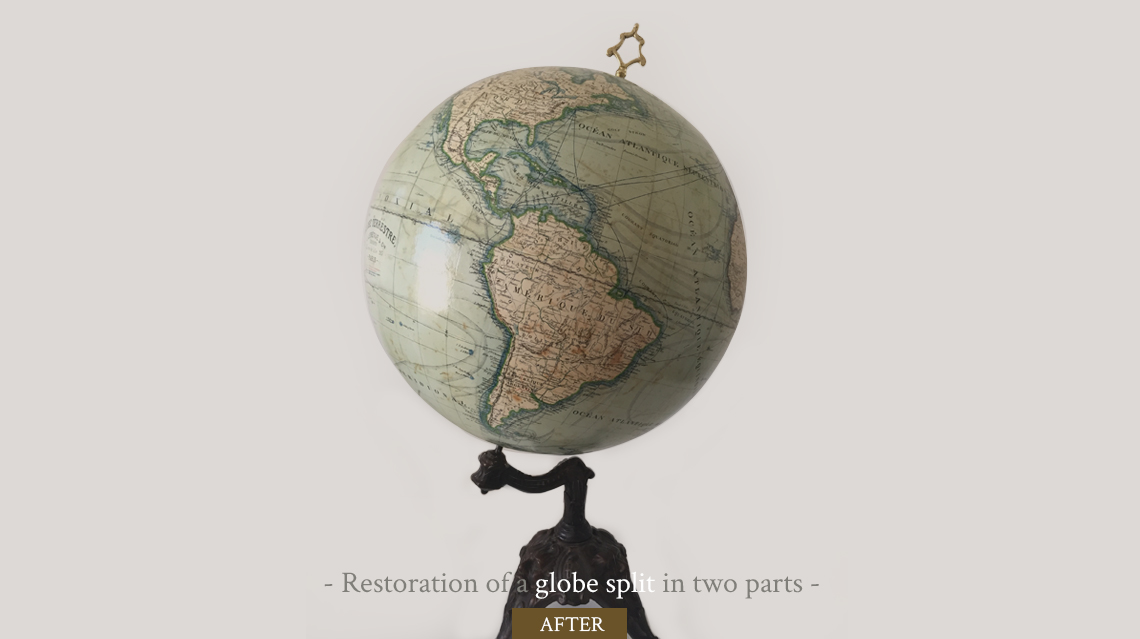

Globes Conservation
Originally scientific instruments, globes helped navigation. Very early on, they became a symbol of knowledge and power, and were an essential item in the library of scholars and eminent people. Precise and precious, they have technical, artistic and historical specificities that it is essential to master.
For their restoration, it is necessary to:
– preserve their qualities as articulated and mobile works of art, with sometimes very complex rotation systems;
– ensure the compatibility of the restoration materials with those of the globes;
– gather information on the geographical or astronomical knowledge of each period to avoid anachronisms;
– guarantee the discretion of the interventions by filling in and retouching with great precision;
– control the impact of the interventions carried out on these scientific instruments.
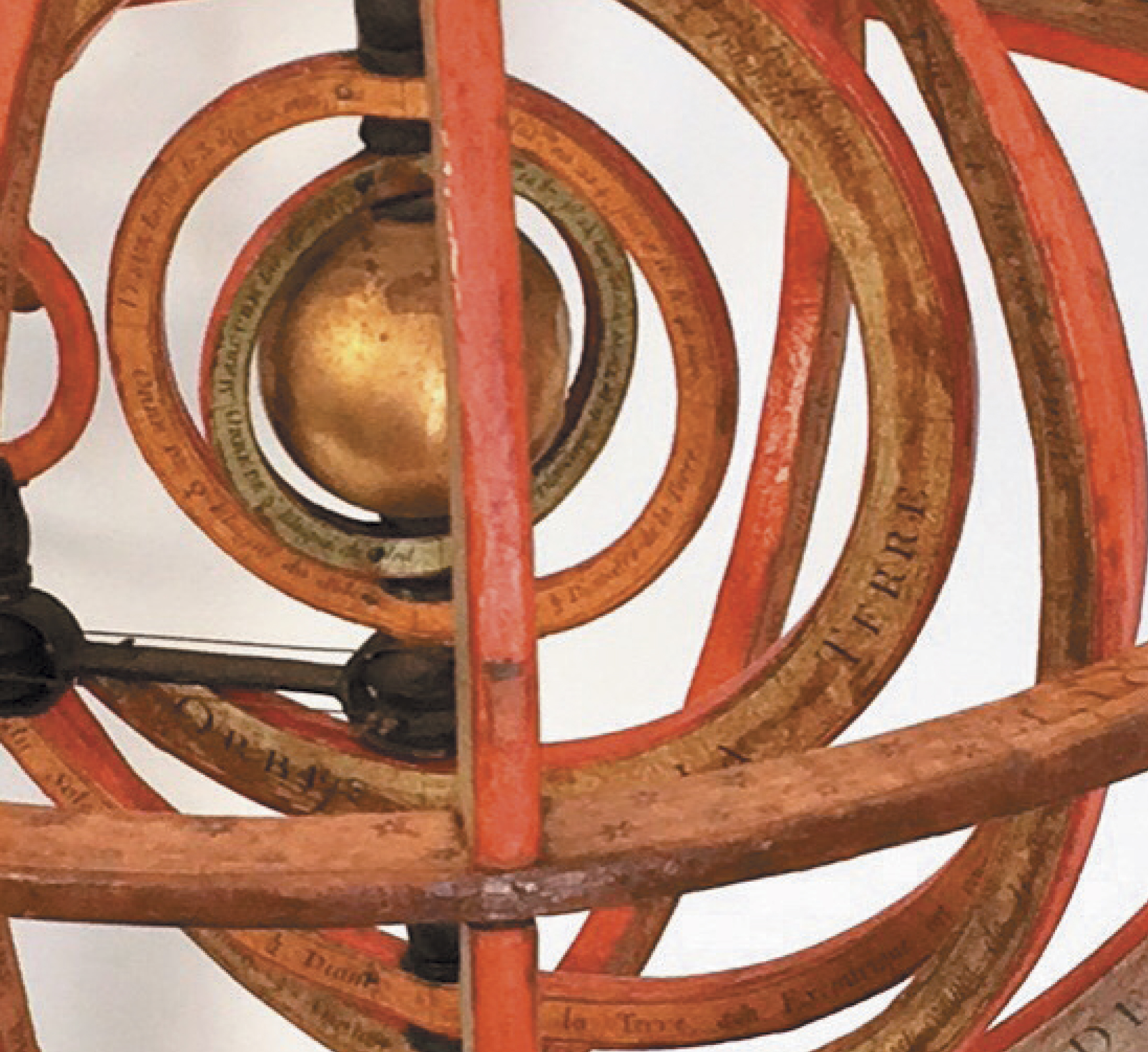
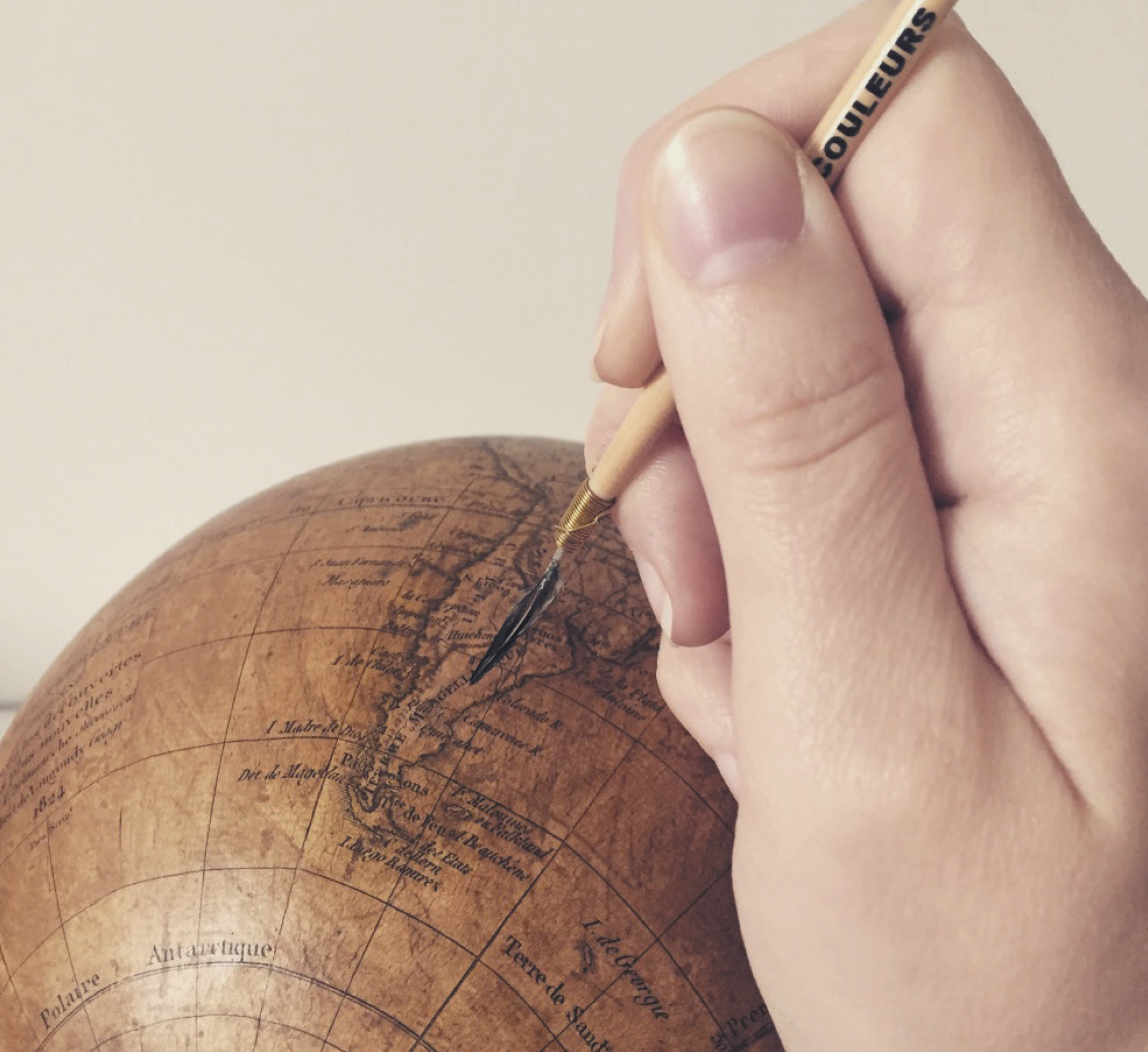
The term “globes” includes all types of works of spherical volume which are articulated and composite. The most common ones are terrestrial and celestial globes. But there are others such as telluriums, lunariums, planets, armillary spheres…
Globes tell the story of the evolution of knowledge. One of the oldest terrestrial one that has come down to us dates back to 1492, the year America was discovered, which consequently does not appear on it! Reflecting the imagination of those who designed them, they can also assert the power of a country or continent by giving it an oversized place. With the spread of printing techniques, globes were gradually produced in series, with reproductions becoming identical depending on the manufacturer.
Recreating missing map areas: techniques used
If these gores are available in the archives of museums or libraries, Yolaine can obtain a copy printed on paper with the same characteristics as the damaged globe.
She incorporates this into the restoration process. If not, Yolaine researches to find, for example, photographs of a similar model, and makes a freehand copy of them.
Depending on the condition and value of the object, the restorer suggests different levels of intervention,from minimalist to illusionist.. In the first case, the aim is to stop the degradation that could spread and to reinforce the weaknesses of the work in order to allow its good keeping. Illusionist intervention adds particular attention to aesthetics and restores the object to what it would have looked like if it had not suffered damage.
When the restoration also requires working on wooden or metal elements, Yolaine calls on her professional network, notably wood and iron conservators.

Some examples of restoration

ATELIER DE RESTAURATION DE GLOBES ET D’ÉVENTAILS
Yolaine Voltz
1, avenue du petit Parc
94300 VINCENNES
+33 (0)6 43 20 57 20
© Tous droits réservés L’Utile Zéphyr – Mentions légales – Mise en mots : Lorraine Bôle du Chaumont – Mise en images : Sarah Laizé Poullain – www.revelatrices-identite.com


